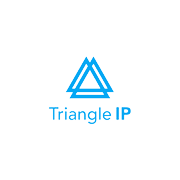University Of Massachusetts Patent Portfolio Statistics
Profile Summary
This article summarizes the perfomance of the assignee in the recent years. The overall statistics for this portfolio help to analyze the areas where the assignee is performing well. The filing trend, perfomance across the tech centers and the perfomance of the recent applications has been mentioned below. All the stats are calculated based on the perfomance in USPTO.
How does the overall patent portfolio of University Of Massachusetts look like?
| Assignee | Art Units | |
| Total Applications: | 1,310 | 2,068,528 |
| Granted Patents: | 711 | 1,141,214 |
| Grant Index | 72.11% ↑ | 68.78% |
| Abandoned/Rejected Applications: | 275 (27.89%) | 518,090 (31.22%) |
| In-Process Applications: | 322 | 409,224 |
| Average Grant Time: | 3.13 Years ↑ | 2.8 Years |
| Average Office Actions: | 1.87 ↑ | 1.68 |
Which Technology Area University Of Massachusetts is filing most patents in? (Last 10 years)
| Art Unit | Definition | Total Applications |
| 1635 | Molecular Biology, Bioinformatics, Nucleic Acids, Recombinant DNA and RNA, Gene Regulation, Nucleic Acid Amplification, Animals and Plants, Combinatorial/ Computational Chemistry | 116 |
| Opap | Parked GAU | 82 |
| 1633 | Molecular Biology, Bioinformatics, Nucleic Acids, Recombinant DNA and RNA, Gene Regulation, Nucleic Acid Amplification, Animals and Plants, Combinatorial/ Computational Chemistry | 62 |
| 1674 | Process, Nucleic acid, Protein, Carbohydrate Chemistries and Diagnostics | 42 |
| 1648 | Immunology, Receptor/Ligands, Cytokines Recombinant Hormones, and Molecular Biology | 40 |
How many patents are University Of Massachusetts filing every year?
| Year | Total Applications | Predicted |
| 2022 | 0* | 619 |
| 2021 | 48* | 637 |
| 2020 | 86 | 530 |
| 2019 | 91 | 91 |
| 2018 | 78 | – |
| 2017 | 66 | – |
| 2016 | 75 | – |
| 2015 | 51 | – |
| 2014 | 57 | – |
| 2013 | 65 | – |
*The drop in the number of applications filed in last two years compared to previous years is because applications can take up to 18 months to get published
Recently filed patent applications of University Of Massachusetts in USPTO?
Application number: 17/629,798
Abstract:
Publication date: –
Applicant: University Of Massachusetts
Inventors: K Oshadha Ranasingha
Publication number: None
Application number: 17/629,893
Abstract:
–
Publication date: –
Applicant: University Of Massachusetts
Inventors: B Cantor Sharon
Publication number: US20220219383A1
Application number: 17/619,069
Abstract:
Publication date: –
Applicant: University Of Massachusetts
Inventors: David Kazmer O
How are University Of Massachusetts’s applications performing in USPTO?
| Application Number | Title | Status | Art Unit | Examiner |
| 17/629,798 | Printable Mixture, Manufacture, And Use | Docketed New Case – Ready for Examination | OPAP | Central, Docket |
| 17/629,893 | Prediction Of Cancer Therapy Efficacy | Docketed New Case – Ready for Examination | OPAP | Central, Docket |
| 17/619,069 | Injection Printing Via Shell Deposition And Cavity Filling | Application Undergoing Preexam Processing | 1742 | – |
| 17/520,603 | Inhibitors Of Protein Arginine Deiminases (Pads) And Methods Of Preparation And Use Thereof | Docketed New Case – Ready for Examination | OPAP | Central, Docket |
| 17/608,053 | Genetically Engineered Microorganisms And Methods Of Use | Docketed New Case – Ready for Examination | OPAP | Central, Docket |

